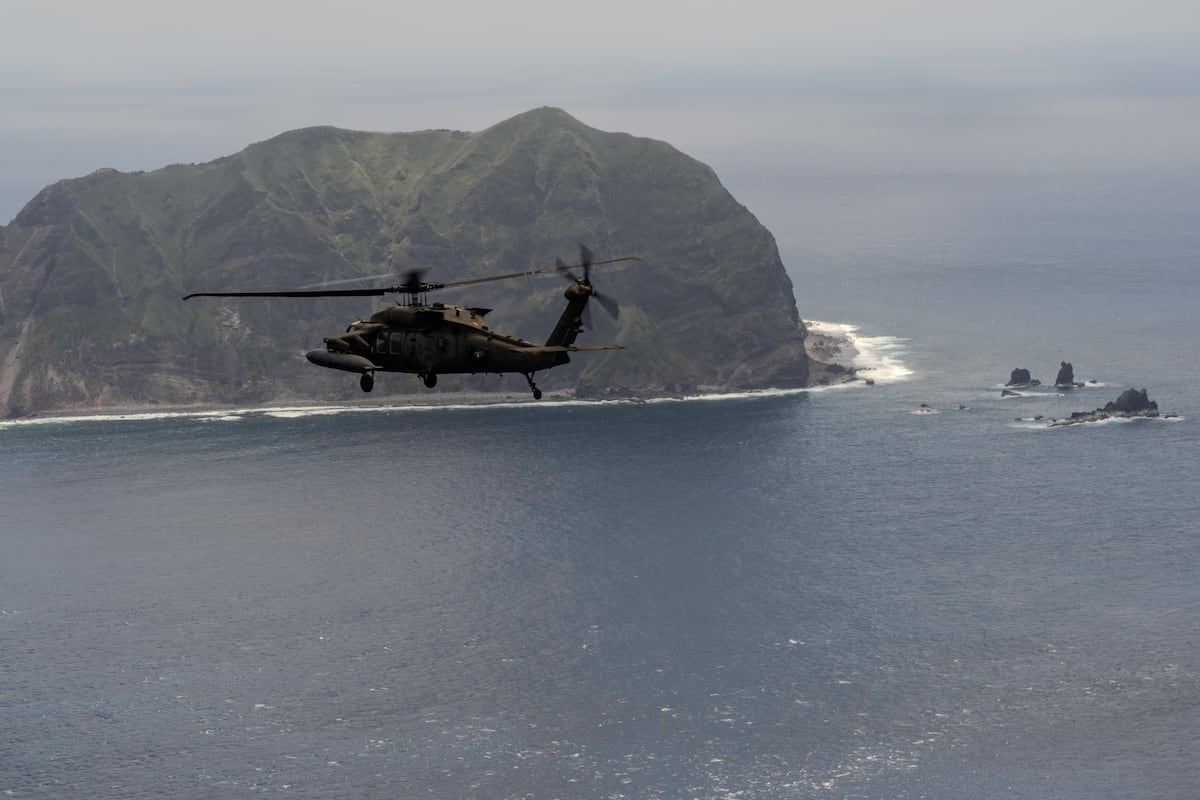When America goes to war, it likes to be on the offensive. “Nobody ever defended anything successfully,” Gen. George S. Patton famously said. “There is only attack and attack and attack some more.”
But for six months after Pearl Harbor, the U.S. military retreated and retreated some more. The U.S. garrison in the Philippines, under Gen. Douglas MacArthur, steadily retreated before the Japanese onslaught that culminated in the surrender at Bataan in May 1942. Isolated outposts at Wake Island and Guam fell, while the decimated and outnumbered U.S. fleet carefully stuck to hit-and-run as America mobilized for total war.
Today, a U.S. Army officer has a warning: In the face of growing Chinese military power, America needs to relearn how to conduct a fighting retreat in the Pacific.
“Fading advantages in firepower, distributed forces, and the growing operational reach of China’s People’s Liberation Army (PLA) require an expansion of operational thought,” wrote Maj. Patrick Smith in a recent essay for Military Review, an Army professional publication. “The joint force must consider methods of retrograde to shape advantages in time, space, and force.”
Smith lists several factors that imperil America’s position in the Pacific.
“Small constellations of U.S. elements — ashore and afloat — encircle the looming mass of mainland China,” he wrote. “Operating on tenuous exterior lines, they are vulnerable to defeat in detail by a prodigious array of standoff munitions or blockade.” Resupply is difficult within range of Chinese weapons, reserves of personnel and munitions are scarce, and “regional partners can quickly about-face on support to U.S. forces, making presence in some locales untenable.”
Smith also worries that the U.S. lacks sufficient sealift, arguing that “glaring training shortfalls in crisis response, worsened by maintenance deficiencies, compromise U.S. capacity to conduct amphibious actions.”
Of all military operations, retreat under fire is probably the most difficult. Smith points to several historical examples where U.S. forces had to conduct fighting withdrawals, including the American Revolution, Civil War and World War II. Perhaps the most relevant example for the Pacific today is the 1941 Philippines campaign, where MacArthur planned a delaying action that called for U.S. and Filipino troops to gradually retreat from Manila south to the fortified Bataan peninsula — and then hold on until a relief force arrived from America. “Dugout Doug” MacArthur’s leadership in 1941 was controversial to say the least, but the six-month resistance until May 1942 did inflict some delay on Japanese operations.
Given that Manila was 2,000 miles from Tokyo and 5,000 miles from Pearl Harbor, choosing to conduct a retrograde operation while awaiting reinforcement was not an unreasonable strategy. The problem was that the relief force lay at the bottom of Pearl Harbor after the Japanese attack on December 7th. Not only didn’t the promised reinforcements arrive, but there was insufficient transport to evacuate the Philippines garrison.
“Strategic planners failed to prioritize sealift as the American Filipino force grimly gave way,” Smith noted. A similar fate nearly befell Washington’s army with its backs to the East River at the Battle of Long Island in August 1776, but for a regiment composed of Massachusetts fishermen who ferried the Continentals to safety.
A more successful example was Gen. Ulysses S. Grant’s 1864 campaign in Virginia, when the Army of the Potomac withdrew from Cold Harbor. Through an elaborate deception campaign, Grant diverted Confederate Gen. Robert E. Lee’s attention by ordering the Army of the Shenandoah to make a feint attack toward Lynchburg 140 miles away. The Army of the Potomac then redeployed by crossing the James River, a potentially fatal operation if the Confederates had attacked.
Smith argues that the U.S. needs to relearn how to retreat.
“Fighting withdrawals and delays will be sharpened arrows in the quiver of operational leaders campaigning in the early stages of a Pacific fight,” he wrote. “In those precarious moments, the joint force should prudently select positions from which it can absorb repeated blows while degrading enemy means.”
Smith envisions a widely distributed joint force that would “confound the PLA with a targeting dilemma if it decides to switch to the offensive.” Deception operations would be key: “Similar to Grant’s illusory movements to confuse Lee, feints, demonstrations, and advances within and outside of theater may freeze enemy actions to create time and space for movement of friendly forces.”
Adroit maneuvers, well-timed withdrawals and clever deception operations would exploit American strengths and Chinese weaknesses, Smith argued.
Nonetheless, most Americans would probably agree with Patton that the best defense is a good offense. Knowing how to retreat is important, but it’s more important to be able to absorb the enemy’s blows while inflicting your own, Eric Heginbotham, a researcher at MIT’s Center for International Studies, told Defense News.
In contrast to 1941, the situation in the Pacific today “has to do largely with long-range fires and our ability to survive adversary ones while conducting our own,” Heginbotham said. The problem is that the U.S. has failed to harden its Pacific airbases against Chinese missile barrages, or ensure that U.S. forces enjoy flexible and redundant logistics that can function in the face of Chinese attacks.
“This has a bit less to do with retrograde per se, than not putting our forces forward in highly vulnerable positions,” said Heginbotham. Dispersing for distributed operations can help mitigate those vulnerabilities.
Nonetheless, Heginbotham agrees the U.S. military needs to know how to retrograde operations. Ironically, despite America’s distaste for retreat, the U.S. can do this better than China.
“One advantage we do enjoy in the Pacific is maritime depth and the ability to engage where and when we want,” Heginbotham said. “In contrast, the Chinese fleet is up against a continent. It has nowhere to run or hide and is, in effect, in the shooting gallery from day one.”
Read the full article here





